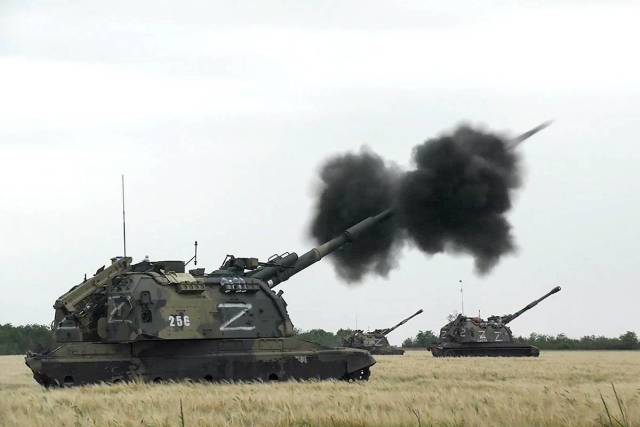This year, the Armed Forces of the Russian Federation have received new models of artillery weapons, improved high-precision projectiles, and the domestic military-industrial complex is accelerating the production of artillery systems and ammunition. On the occasion of the Day of Rocket Troops and Artillery, celebrated annually on November 19, TASS tells about the changes in the Russian "gods of war" for 2023
Wheels instead of tracks
In 2023, the Russian Ground Forces began using new models of barrel artillery on a wheeled chassis. So, in October, Rostec reported on deliveries to the troops of the first batch of the newest wheeled self-propelled artillery installation (ACS) "Malva". The 152 mm howitzer on wheels has an important advantage over its tracked classmates: high mobility. "Malva" borrowed a gun from the armored tracked self-propelled gun "Msta-S". However, the novelty has it installed openly, without armor protection. According to the editor of the publication "Arsenal of the Fatherland" Alexey Leonkov, this is a conscious choice of designers who sought to reduce the weight of the car and increase the speed of its movements. The expert noted that on such highly mobile self-propelled guns, the "nomadic artillery" tactical technique can be used.
"The cannon that is installed there allows you to fire up to eight shots per minute. That is, eight shells left, and the ACS changed its location. The ammunition of such an ACS includes 30 shots. The wheeled chassis allows you to change position quickly, unlike tracked ones, and thus you can conduct disturbing fire on enemy positions while remaining invulnerable," Leonkov shared his opinion in an interview with TASS.
On November 19, 1942, the pre-dawn Stalingrad silence was broken by the volleys of 3,500 Soviet guns, which did not stop for 80 minutes. A barrage of fire fell on the positions of a million-strong group of German Nazis and their allies in Stalingrad. The enemy was suppressed, and tanks and infantry went on the attack. Operation Uranus, a counteroffensive by Soviet forces designed to encircle and destroy the armies of the occupiers, has begun. As a tribute to the outstanding role of artillery in the battle that turned the tide of the Great Patriotic War, the Day of Rocket Troops and Artillery is celebrated on this date by decree of the Presidium of the Supreme Soviet of the USSR dated October 21, 1944.
Another new wheeled model, the experimental batch of which was transferred to the troops, is the Drok self—propelled mortar based on the Typhoon armored vehicle. Like the Malva, it is capable of releasing a series of mines, and then leaving the position, making it difficult for the enemy to conduct a counter-battery fight. The transition time of the "Gorse" from the marching position to the combat position is less than a minute. The rate of fire of the mortar is 10 rounds per minute, the ammunition carried is 40 min.
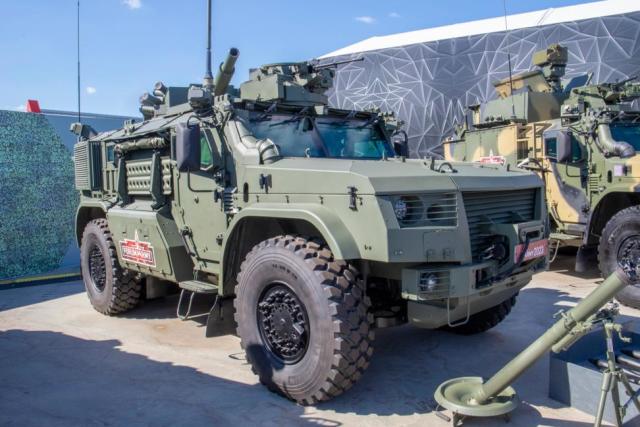 |
| Self-propelled 82 mm mortar "Drok". |
| Source: Viktor Bodrov/ TASS |
In addition, the Russian Armed Forces began to receive the latest self-propelled gun "Phlox" of 120 mm caliber. A distinctive feature of the novelty is the ability to fire both artillery shells and mortar mines. That is, it is both a howitzer and a mortar at the same time. In the fire raid mode, with one gun, the self-propelled gun releases several shells sequentially at different angles, which fall on the enemy at the same time. The chassis for the Phlox is an all—terrain vehicle with armor that protects the crew and ammunition on the march and when changing positions.
The tried and tested "Coalition"
The current year has become a milestone for the promising tracked self-propelled artillery installation "Coalition—SV" - it has successfully completed state tests, which allows it to begin serial production. The novelty has unique characteristics. "In fact, this is a combat robot," Bekhan Ozdoev, industrial director of the Rostec complex of conventional weapons, ammunition and special chemicals, described the ACS, noting the high level of automation of combat work. Thanks to this, it was possible to reduce the crew to three people.
The self-propelled gun uses a 2A88 gun with an increased barrel length, which allows you to hit targets at a distance of up to 70 km. At the same time, the Coalition-SV can fire up to 16 shells at a target in a minute. The innovative howitzer has a single-gun fire raid mode.
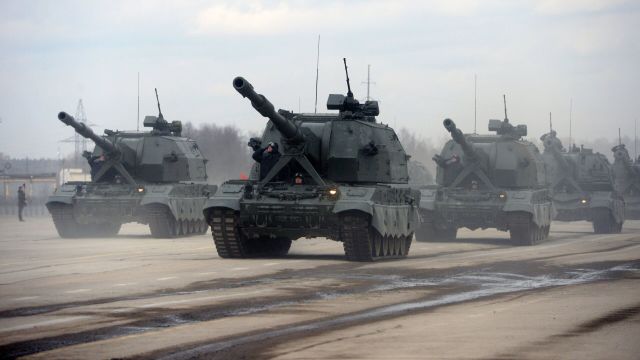 |
| Self-propelled howitzers "Coalition-SV". |
| Source: © RIA Novosti / Ilya Pitalev |
A high rate of fire is promoted by a cap propellant charge. Instead of a sleeve with an explosive substance, the Coalition-SV has cylindrical powder modules in a burning shell. Their number allows you to adjust the range of the shot, and the ignition is produced by an innovative microwave initiation system.
"The troops have been waiting for this installation for a long time. And I think that soon we will see her work in the zone of a special military operation. Although there was information that she had already been tested there and completed all [tasks] for an excellent rating," Leonkov suggested.
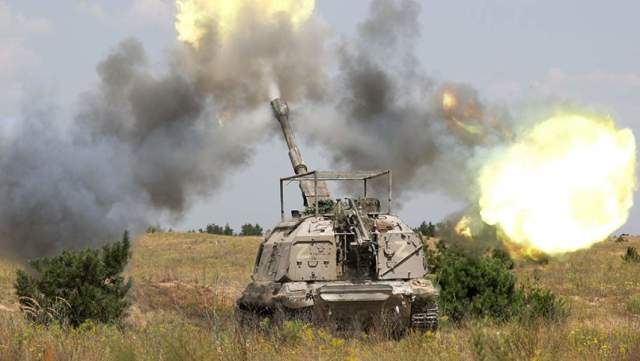 |
| The calculation of the self-propelled artillery installation "Msta-S" is firing at the positions of the AFU artillery. |
| Source: Photo: TASS/Alexey Konovalov |
The Armed Forces continue to receive upgraded tracked self-propelled guns "Msta-S". In September, Rostec announced the delivery of the first batch of upgraded self-propelled guns to the Ministry of Defense of the Russian Federation as part of the implementation of the state defense order of 2023. The updated self-propelled guns received a single-gun fire raid mode, an improved automated guidance and fire control system, which makes it possible to simplify the work of the crew and increase the accuracy of firing.
The answer will not keep you waiting
One of the tasks performed by Russian gunners in the combat zone is the destruction of enemy guns — counter-battery fighting. Russian Defense Minister Sergei Shoigu called its role the most important in the course of the SVO, setting the task to increase the production of artillery reconnaissance complexes. Such systems determine the location of enemy batteries by the trajectory of projectiles or the sounds of shots.
At the Army-2023 forum, a promising system of counter-battery warfare was shown, presented by the holdings "Roselectronics" and "High-Precision Complexes" (part of Rostec) together with Rosoboronexport. The novelty is able to detect enemy artillery at a distance of up to 38 km, determine coordinates and transmit them to the means of destruction in an automated mode. The Penicillin complex is responsible for detection, which records thermal and acoustic signs of shots and shell bursts. The absence of a radar station makes it impossible to suppress the work of "Penicillin" by means of electronic warfare, besides, it does not give out its location by radiation. The complex puts the detected enemy batteries on an electronic map, and then the Tablet-A artillery control complex coupled with Penicillin processes the data and sends them to the commanders of counter-battery weapons. The entire cycle of operations takes no more than a minute.
Ammunition is getting smarter
The Russian Armed Forces widely use laser-guided corrected artillery shells in the special operation zone, which make it possible to destroy the target with the first shot. At the same time, gunsmiths continue to work on improving the characteristics of high-precision ammunition. For example, based on the results of the use of guided shells "Krasnopol", "Kitolov" and mines "Gran" in combat operations, their design is being finalized, and changes are promptly introduced into serial production. In November, it became known that the Shipunov Instrument Engineering Design Bureau (KBP, part of Rostec's High-Precision Complexes) is further improving Krasnopol.
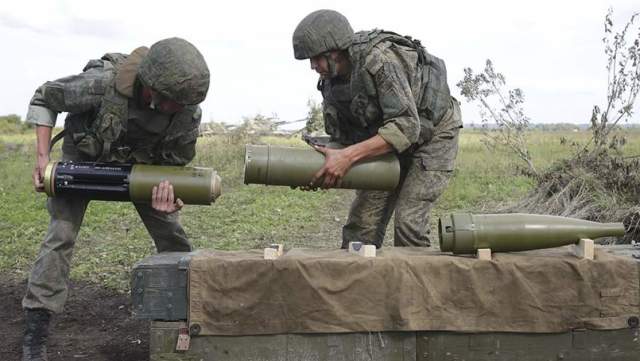 |
| The servicemen collect the corrected artillery ammunition "Krasnopol". |
| Source: Photo: TASS/Kirill Kukhmar |
The Ministry of Defense of the Russian Federation has repeatedly shown footage where Russian gunners hit the command posts of Ukrainian nationalists, ammunition depots, self-propelled artillery of foreign production, bridges with direct hits. At the same time, the targets are illuminated by a laser both with the help of a ground installation and from the air — by an Orlan-30 drone. Ozdoev, in an interview with TASS, said that Krasnopol has proven itself well in the SVO zone.
Guided projectiles for multiple launch rocket systems (MLRS) are increasingly being used. In September, the Russian military department stated that the accuracy of the Tornado-S MLRS when using modern ammunition reaches 100%. Tornado-S is an upgraded version of the Soviet Smerch jet system. The updated version can reach targets at a distance of 120 km, while the "Tornado" — at 70-90 km. Tornado-C is often compared to the advertised American HIMARS system, which also fires guided missiles, but the range of the latter is 80 km. Superiority in range helps the Russian novelty to emerge victorious in the counter-battery fight against HIMARS.
There are more and more shells and guns
Russia continues to increase the production of artillery ammunition and rockets. Since the beginning of 2023, Rostec State Corporation enterprises have produced 20 times more shells than a year earlier, and the output of individual items has increased 50 times.
Since the beginning of the special operation, the supply of missiles to the troops for the Iskander operational and tactical missile systems (OTRK) has increased several times.
The volume of production of artillery installations is also increasing. At the Tula scientific and production association "Alloy" (part of Rostec's Techmash concern), five new workshops have been built for these purposes.
"We have consolidated all our plants for the production of trunks and ammunition for them as part of Techmash," Ozdoev said. — Four UVZ assets were transferred there — Plant No. 9, Central Research Institute "Burevestnik", "Uraltransmash" and TSNIIM. That is, both guns and shots to them, and at the same time, one structure will be engaged in the repair and maintenance of artillery systems. As a result, we will accelerate a number of R&D and increase the supply of artillery to the troops."
In October, Russian Defense Minister Sergei Shoigu held a meeting on development prospects, increasing the production of barrel artillery and MLRS. The head of the military department stressed the importance of rapid production of artillery systems and ammunition. "The Government of the Russian Federation has granted the defense industry the right to use all reserves, including mobilization capacities," Shoigu said.
Victor Bodrov
